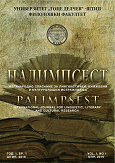DEFINITION AND CLASSIFICATION OF PHRASEOLOGICAL EXPRESSIONS AND PROBLEMS OF IDIOMATIC EQUIVALENCE IN TRANSLATION
DOI:
https://doi.org/10.46763/palim2090015spAbstract
This paper deals with two issues – review of established classifications of phraseological expressions as well as specificities of translation related to their transferred meaning. In the first part of the paper, a theoretical basis is provided for systematic classifications of phraseological expressions on the basis of different approaches and underlying criteria, while at the same time providing valuable insight into the main characteristics that define each specific type of phraseologisms. Furthermore, another aim of this paper is to discuss the type of meaning they convey, and to identify the main problems related to translation of phraseological expressions from English into Macedonian, which are connected to their defining and cultural characteristics. Although phraseological expressions are often used in conversational context due to their figurative meaning, they enjoy broad usage from colloquial to professional settings, so their use ranges from informal to semi-formal and from universal to culture-specific. The author identifies three main difficulties when translating phraseological expressions, such as maintaining a sufficient degree of idiomaticity in the target language, preserving idiomatic equivalence and respecting the cultural particularities and differences in English and Macedonian. One of the main goals of this paper is to discuss concepts of idiomaticity and equivalence with special focus on the different forms of idiomatic equivalence. On the basis of a comparative analysis of English and Macedonian examples, the author of this paper draws conclusions on the most suitable method for translation of phraseological expressions and suggests adequate translation strategies which point the translator in the right direction at the crossroads between literal and idiomatic translation.
Keywords: phraseological expressions, (idiomatic) equivalence, idiomatic translation method, translation strategies.


